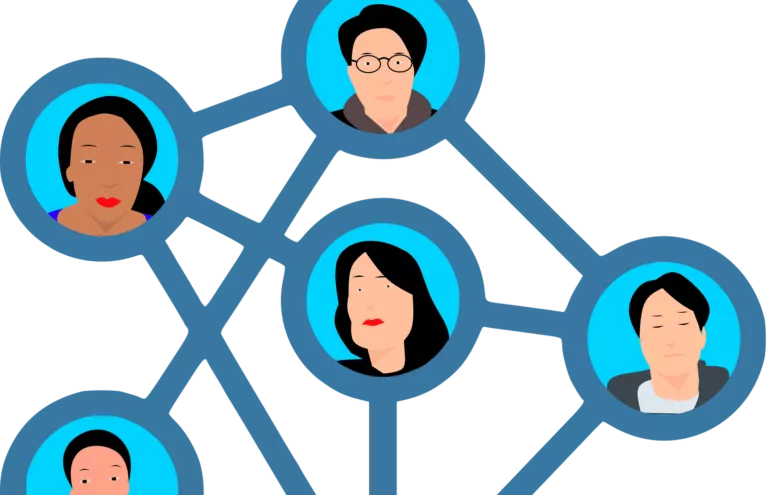The business case for diversity and inclusion is indisputable. Diverse and inclusive organizations achieve better results and have a higher capacity for innovation. In addition, these organizations are more attractive in the labor market, giving them an edge in attracting scarce talent. Based on this business case and the call from society to do the right thing, many organizations are working hard to better accommodate their diversity. But how do you start working on these themes as an organization? And how do you tackle this in a data-driven way?
AnalitiQs offers various services and products in the field of diversity & inclusion.
Click on the links below to go to a specific section:
- Data-driven D&I maturity assessment
- Diversity & Inclusion scan
- Equal Pay Analysis
- Gender Mobility Analysis
- Diversity at the Top Prediction Model
- Recruitment Bias Check
- Qualitative Research
Want to read more about diversity and inclusion before diving into our products?Then scroll down.

Want to know more about data-driven D&I? Download the whitepaper here
Within AnalitiQs, what do we mean with diversity and inclusion?
Diversity is about the visible and invisible differences between people. The most well-known and commonly measured example is the difference between men and women. But other differences could be a person’s cultural background, sexuality, or disability. When conducting a survey, we often leave it up to the organization to decide which diversity dimensions they want to explore. This depends on available data and their diversity goals.
Inclusion is about how employees can be themselves in the workplace if they are valued for their unique qualities and characteristics and can express themselves. An organization with a high level of diversity, but a low level of inclusion, will not benefit from its diverse workforce. Among other work, AnalitiQs performs an annual benchmark on the degree of diversity and inclusion among the Dutch population. Click here to see the results.
AnalitiQs and WOMEN Inc.
WOMEN Inc. is a non-profit organization dedicated to equal rights for men and women on various themes: work, health, finance, and media. AnalitiQs and WOMEN Inc. collaborate on the work theme, mainly focusing on diversity and inclusion.
The analyses conducted by AnalitiQs often raise many compelling conclusions. When a pay gap is detected or a particular group of employees reporting feeling excluded, WOMEN Inc. provides clear advice on setting policies or other targeted follow-up steps.
Analyses/services within D&I
Data-driven D&I maturity assessment
Understand diversity and inclusion through the Employee Journey. The Employee Journey consists of different phases, such as the application, start-up, and growth phases. The products and services AnalitiQs offers in diversity and inclusion are closely aligned with these different phases.
When an organization starts with diversity and inclusion, AnalitiQs recommends starting at the top of the Employee Journey, at Strategy and Leadership. Before working on diversity and inclusion, an organization must define diversity and inclusion and choose what diversity dimensions they wish to focus on first.
After this, AnalitiQs advises starting with a diversity and inclusion survey. The survey results give the organization their first insights, and it is even more apparent where the focus should be in the further Employee Journey.
Issues arise in different steps of the Employee Journey depending on the nature of the organization’s problem. Suppose this first analysis shows a problem within the organization regarding diversity. In that case, looking at the first and last steps in the Employee Journey (steps 1, 2, 3, and 8) is essential. If the analysis reveals a challenge primarily related to inclusion, then the middle steps in the organization should be looked at (steps 3 to 7).

Click here to return to the table of contents.
Diversity & Inclusion Scan
The Diversity & Inclusion Scan provides insight into an organization’s diversity and inclusion level. It shows differences in the perceived levels of inclusion among different groups in the organization. It offers concrete steps to improve the level of inclusion to gain other benefits, such as innovation and retention in the organization.
Want to know more? Check the page or go back to the table of contents.
Equal Pay Analysis
Pay Gap, Equal Work, Equal Pay, Equal Pay for Equal Work, Equal Pay, Pay Equity, Pay Parity. They are all names for the same thing.
What matters is that people doing the same work are paid equally, regardless of their background, and organizations should be able to demonstrate this. AnalitiQs conducts research into possible pay differences and what causes them.
Want to know more? Check the page or go back to the table of contents.
Gender Mobility Analysis
The gender balance in the inflow, flow-through, and outflow of employees says something about the Diversity and Inclusion of an organization. Therefore, a good understanding of the mobility patterns of men and women is crucial for any organization serious about diversity and inclusion. AnalitiQs researches the possible differences in mobility within the organization and in combination with equal pay.
Want to know more? Check the page or go back to the table of contents.
Diversity at the Top prediction model
The diversity at the top of an organization often says something about the diversity in the rest of the organization. It is also a positive sign to potential employees that people from different backgrounds have equal opportunities to advance to senior management positions. Many organizations state in their diversity policy that they want to grow toward a (more) equal distribution in top management. Knowing whether enough women are advancing in an organization and whether goals are being met is an important issue. The ‘diversity at the top’ prediction model of AnalitiQs offers insight into this.
Want to know more? Check the page or go back to the table of contents.
Recruitment Bias Check
Does everyone have an equal chance of being considered for a job? AnalitiQs’ Recruitment Bias Check analyzes whether significant differences exist between groups of applicants and the ultimate probability of being hired for a job.
Want to know more? Check the Dutch page or go back to the table of contents.
Qualitative Research
A data-driven approach to diversity and inclusion is what AnalitiQs stands for. But data-driven does not only mean numbers. Conducting qualitative research to understand the current state of diversity and inclusion in an organization is essential. Dialogue with employees reveals other insights than through existing HR data or a survey.
Want to know more? Check the page or go back to the table of contents.
Examples: Diversity & Inclusion cases

Qualitative research on Diversity & Inclusion at a Dutch multinational
Diversity & inclusion research through interviews and focus groups uncovers areas for improvement and leads…
Read moreGetting started with Diversity & Inclusion?
Contact us for more information!



